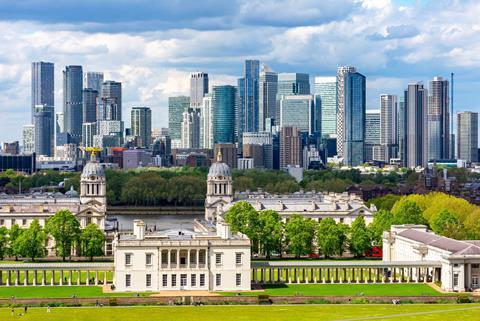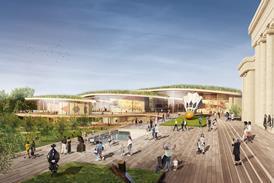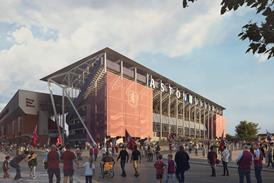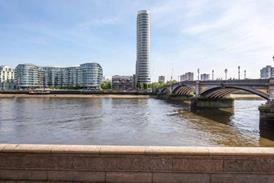Ben Derbyshire looks at how London’s two business districts have taken a very different approach to housing as they respond to working from home
The post-pandemic new-normal is driving change in our towns and cities. Business districts and office developers must now compete not only with each other but with that new auto-reply signifier - WFH (Working from Home).

Shiny new office buildings are going up to tempt tenants, leaving an increasing legacy of apparently obsolescent but often very fine 19th & 20th century buildings empty. Retail continues to decline; high streets have escalating vacancy rates, while stories of redundant department stores fill the pages of both national and trade press.
This phenomenon is global. Visiting Sao Paolo last month, the degree of dereliction evident around Patio de Colegio in the heart of the city, where Jesuit missionaries first settled in 1554, came as a shock. During the eighteenth and nineteenth centuries, coffee and slave trading transformed this religious and administrative heart of Sao Paolo into its financial district.
But it is now empty. Its disused commercial buildings are daubed over their entire façades as increasingly daring graffiti artists reach higher and higher to signal abandonment and waste.
Nothing quite like that has happened here – yet. But returning to the UK I’ve been reflecting on the circumstances in two of our own commercial centres – The City of London and Canary Wharf – a tale of two cities.
Institutional investors are abandoning unwanted stone-built mansion-block-scale commercial buildings that would make great apartment blocks, lining streets outside the high-rise clusters.
How are these two business districts responding to new choices available to their potential customers? Both are variously challenged to attract tenants. You would think that the allocation of new office space, like housing, would be a strategic matter decided by the overarching London Plan. Instead, there is no doubt each central business district is in ruthless competition with the other.
As a former resident of The Barbican in City of London, I can confirm it is a great place to live - lovely mid-century apartments surrounding lush water gardens. It’s incredibly accessible by public transport, rich in cultural opportunity and surrounded by attractive neighbourhoods like Shoreditch, Spitalfields and across the river, Bermondsey – with great night-life. It’s a shame, then that City planners are turning a blind eye to this opportunity.
Especially as institutional investors, pouring money in new Grade A office towers, are abandoning unwanted stone-built mansion-block-scale commercial buildings that would make great apartment blocks, lining streets outside the high-rise clusters.
No, the city planners seem intent on a mix of yet more new office space, while relying on tourism for footfall outside of the working week.
Housing plays no part in this and, far from the fifteen-minute-city, the square mile continues to rely on the apparently endless patience of the commuter, and families who’s offspring don’t get to see the breadwinner outside weekends.
Recognising the pen-umbric gloom of increasingly overshadowed pavement space, skyscraper developers are turning to private sky gardens that masquerade as public open space. And there is an endless proliferation of proposed outposts of the Museum of London collection, as developers attempt to offset the increasing harm to the setting and significance of perhaps the richest heritage to be found anywhere in the UK.
Housing plays no part in this and, far from the fifteen-minute-city, the square mile continues to rely on the apparently endless patience of the commuter, and families who’s offspring don’t get to see the breadwinner outside weekends.
Both the City and Canary Wharf are of course building out their response to the fourth industrial revolution on a palimpsest of infrastructure from the past; the City on its two-thousand-year-old Romano-British street pattern; its competitor on the wharfage of long-disused dockland. This offers a compelling opportunity.

New housing of a variety of tenures is springing up in and around Canary Wharf. Go there on a weekend and you’ll find its public spaces teeming with people who live locally, there for the experience of modernity, high quality public realm, and of course, shopping.
Just lately, this attractive mix has taken on a whole new dimension. Glenn Howells Architects, Arup, the Eden Project and my own practice have been working to deliver greening across the Canary Wharf estate – including its large expanses of water. Floating pontoons, walkways, ecological planting, and a forest of trees, have been created mostly utilising the expanse of space available in the dock. The result - Eden Dock has a gradually inclined ‘shore’ of timber bleacher seating integrated with amphitheatre steps, walkways and dense garden planting, bringing the public realm down to, and indeed into, the water for the first time.
On the water, floating boardwalks create a new accessible public route connecting a series of floating gardens, an education pontoon, and terraces for social and cultural use. The floating islands lead to an open-water swimming area, set within a safe public setting. Below water level, a cantilevered shelf supports aquatic planting, along with a marine monitoring station, including underwater cameras to track biodiversity, providing a focal point for educational engagement.
New housing of a variety of tenures is springing up in and around Canary Wharf
We call this approach ‘bringing nature home’, and it’s clear that Canary Wharf has created a USP based on biophilia with very different selling point. Admittedly, to judge by the sheer volume of investment-seeking opportunities among its tight knit medieval urban footprint, the City seems to have the competitive edge right now.
But the reworking of 8 Canada Square (the original ‘Canary Wharf building by IM Pei) planned by Kohn Pederson Fox is a vision for multi-use real estate of the future, aimed at meeting the changing requirements of business for the long term. With the coming of Eden Dock, this suggests momentum is building to the east.
As the Mayor of London begins the next iteration of the London Plan, I hope for a proactive approach to meeting the post-pandemic needs of society, capable of an environment genuinely deserving of the epithet, ‘Good Growth’. If Canary Wharf can bring people back to live in a dense urban context, surely the square mile can too – potentially, the definitive fifteen-minute city.
Postscript
Ben Derbyshire, chair, HTA Design and former president of RIBA
















2 Readers' comments